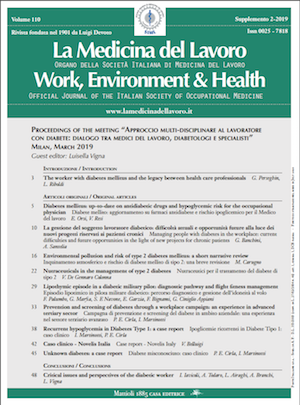Environmental pollution and risk of type 2 diabetes mellitus: a short narrative review
Main Article Content
Keywords
Air pollution, noise, type 2 diabetes mellitus
Abstract
Background: Exposure to air pollution (AP) and environmental noise influences the risk of cardiovascular diseases. These pollutants might also play a role in type 2 diabetes mellitus (T2DM). Objectives: To summarize the current evidence on the association between AP, noise and T2DM. Methods: We searched PubMed for pertinent literature up to March 17 2019, and summarized in a narrative review the 158 retrieved works. Results: In 2009, a first murine model suggested that air pollution might cause insulin-resistance. One of the most relevant ecological studies that followed showed concordant trends among diabetes prevalence and average concentrations of fine particulate (PM2.5) in US counties. In 2015, a robust meta-analysis estimated a RR of 1.10 (95%CI: 1.02-1.18) for 10 µg/m3 increase in PM2.5, and of 1.08 (1.00-1.17) for the same increase in nitrogen dioxide. Even exposures to increasing levels of ozone seem to be associated with higher incident cases of T2DM (+18% per 6.7 ppb). Studies on noise as well, although more limited, seem to indicate an association with an increased risk of T2DM. Discussion: Adequate control for confounders and potential effect modifiers is often highlighted as a critical aspect, together with uncertainty deriving from accurate definition of diagnosis. Open issues are related to critical exposure windows and the role of specific components of the pollution mixture in determining health effects. Current evidence seems to indicate an association between AP and T2DM, but some aspects still need to be elucidated. Greater uncertainty characterizes the association between noise and T2DM.






